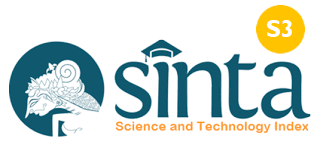The Effect of Numbered Heads Together Method to the Students’ Ability in Writing Recount Text
DOI:
https://doi.org/10.37329/cetta.v3i2.455Keywords:
Numbered Heads Together, Metode, Recount, MenulisAbstract
Penelitian ini adalah penelitian tentang pengaruh metode numbered head together terhadap kemampuan siswa dalam menulis teks recount kelas IX di SMP N 2 Siantar. Penelitian ini dimaksudkan untuk menjawab masalah ini; Apa efek dari menggunakan metode numbered head together terhadap kemampuan siswa dalam menulis teks recount kelas IX di SMP N 2 Siantar? Untuk memecahkan masalah, para peneliti meggunakan beberapa teori yang mendukung penelitian: Bryne dan Nunan (2003), Zemach dan Rumisek (2003), Kendall dan Khuon (2006), Kagan (1994), Knapp (2005), Lie (2002)dan Herman (2014). Metodologi yang digunakan dalam penelitian ini adalah penelitian kuantitatif. Data untuk penelitian ini dikumpulkan dari kelas IX di SMP N 2 Siantar. Peneliti menggunakan dua kelas sebagai sampel, di mana satu kelas adalah kelompok eksperimen dan yang lainnya adalah kelompok kontrol. Instrumen untuk mengumpulkan data adalah dengan tes menulisteks recount untuk kedua kelompok dimana bahan ujian diambil dari materi pelajaran yang diajarkan kepada siswa. Data dianalisis dengan menerapkan t-count. Ditemukan bahwa t = hitung 2,25 dan t-tabel pada tingkat signifikansi p = 0,05 dan df = 56, Nx = Ny-2; 28 + 28 - 2 = 56. Hasil analisis menunjukkan bahwa nilai t-hitung lebih tinggi dari nilai t-tabel (2,25> 1,76). Penelitian ini memyimpulkan bahwa metode numbered head together memiliki pengaruh signifikan terhadap kemampuan siswa dalam menulis teks recout kelas IX di SMP N 2 Siantar. Sarannya adalah guru harus menggunakan metode numbered head together dalam mengajar bahasa Inggris terutama dalam mengajar menulis teks recount untuk meningkatkan kemampuan siswa.
References
Byrne, D. (1979). Teaching writing skills. Logman handbooks for language teacher. London : Longman
Creswell, J. W. (2011). Educational research: Planning, conducting and evaluating, quantitative and qualitative research. Boston: Pearson Education.
Heaton, J.B. (1988). Writing English language tests. London : Longman.
Herman. (2014). An Experiental Function on Students’ Genre of Writing. Jakarta: Halaman Moeka.
Herman, Sibarani, J. K., and Pardede, H. (2020). The Effect of Jigsaw Technique in Reading Comprehension on Recount Text. Cetta: Jurnal Ilmu Pendidikan. Jayapangus Press, ISSN 2615-0891 (E). Vol. 3 No. 1 (2020). PP. 84-102
Hyland, K. (2002). Teaching and researching writing. London: Longman.
Kagan, S. (1994). Cooperative learning. California: Kagan Publishing.
Kendal & Khuon. (2006). Learners writing sense: Integrated reading and writing lessonsfor English language learners. Stenhouse Publishers
Khairani, Y. and Zainuddin. (2012). Improving students’ achievement in writing report text through numbered heads together. Register: Journal of English Language Teaching of FBS UNIMED, Vol 1, No 1 (2012).
Lie, A. (2002). Cooperative learning in the classroom. Jakarta: Gramedia Widiasarana
Nunan, D. (2003). Practical English language teaching.New York. Mcgraw-hillcomponies.
Pasaribu, B., Herman and Hutahean, D. T. (2020). Students’ difficulties in translating narrative text from English into Indonesia at grade VIII of SMP Negeri 9 Pematangsiantar. Acitya: Journal of Teaching & Education Vol. 2 No. 1 2020, PP. 12-18
Raimes, A. (1983). Techniques in teaching writing. Oxford UniversityPress. New York Great clanrendon street.
Zemach E, D and Rumisek, L. A. (2003). Academic writing from paragraph to essay. Design and illustration.
Downloads
Published
How to Cite
Issue
Section
License
An author who publishes in the Cetta : Jurnal Ilmu Pendidikan agrees to the following terms:
- Author retains the copyright and grants the journal the right of first publication of the work simultaneously licensed under the Creative Commons Attribution-ShareAlike 4.0 License that allows others to share the work with an acknowledgement of the work's authorship and initial publication in this journal
- Author is able to enter into separate, additional contractual arrangements for the non-exclusive distribution of the journal's published version of the work (e.g., post it to an institutional repository or publish it in a book) with the acknowledgement of its initial publication in this journal.
- Author is permitted and encouraged to post his/her work online (e.g., in institutional repositories or on their website) prior to and during the submission process, as it can lead to productive exchanges, as well as earlier and greater citation of the published work (See The Effect of Open Access).
Read more about the Creative Commons Attribution-ShareAlike 4.0 Licence here: https://creativecommons.org/licenses/by-sa/4.0/.





